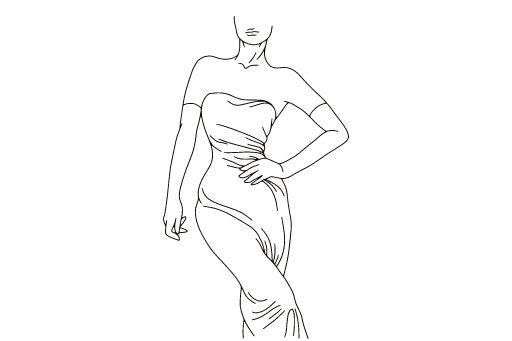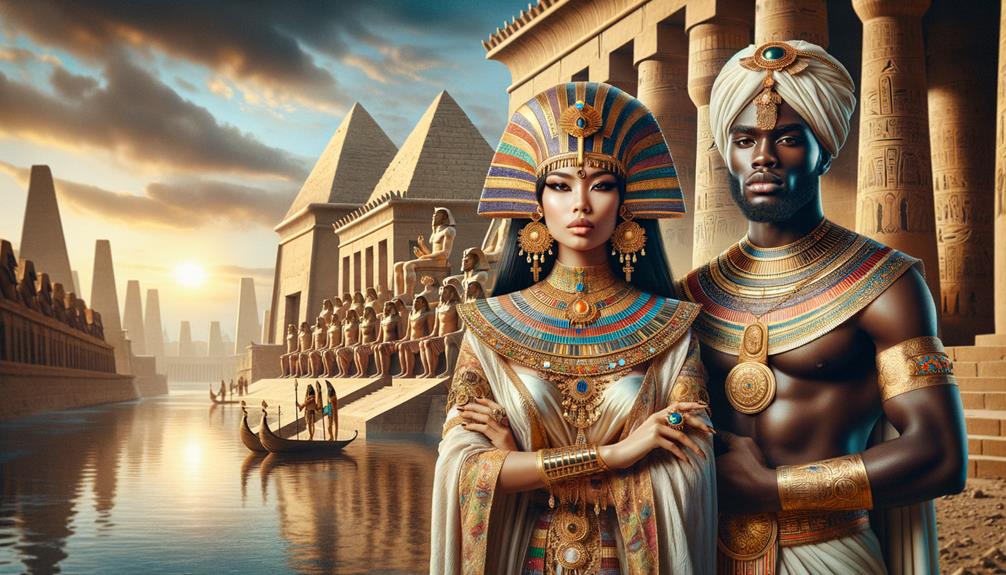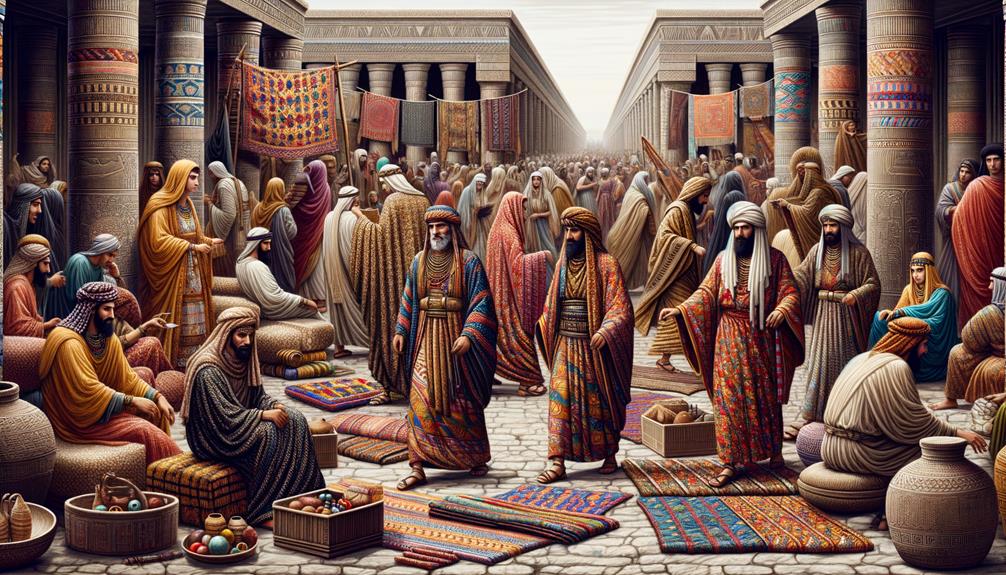When I think about Indigenous North American fashion, I'm struck by its deep roots in cultural identity and history. Each piece of clothing, from intricately beaded moccasins to elaborate feathered headdresses, tells a story of connection to the land and the ancestors. The materials used, such as leather, feathers, and plant fibers, speak of a resourcefulness and respect for nature that's both timeless and profoundly relevant today. What really fascinates me is how modern Indigenous designers are blending these traditional elements with contemporary styles, creating a vibrant dialogue between the past and the present. This fusion is just the beginning of what makes this fashion so compelling.
Historical Overview
Exploring Indigenous North American fashion, with its intricate designs and deep cultural significance, has evolved over centuries, reflecting the unique identities and beliefs of various tribes. When I delve into the history of Native American fashion, I'm struck by the exceptional craftsmanship involved. Historically, traditional clothing was crafted from natural materials like animal hides, feathers, and plant fibers. Each piece wasn't just clothing; it was a statement of identity, a piece of art that told a story.
The precision with which Native Americans selected and utilized these materials speaks to their profound connection to the land. Every feather and bead had meaning, every stitch a purpose. Observing these traditional garments, it's clear that they embody a deep respect for nature and an understanding of sustainability long before it became a mainstream concern.
I've noticed that this rich heritage hasn't just remained static; it's influenced mainstream fashion globally. Unique motifs, materials, and design techniques from Native American fashion have found their way into contemporary designs, making a significant impact. Collaborations between Native designers and mainstream brands not only promote cultural exchange but also empower indigenous communities, fostering sustainable practices in the fashion industry.
Traditional Garments
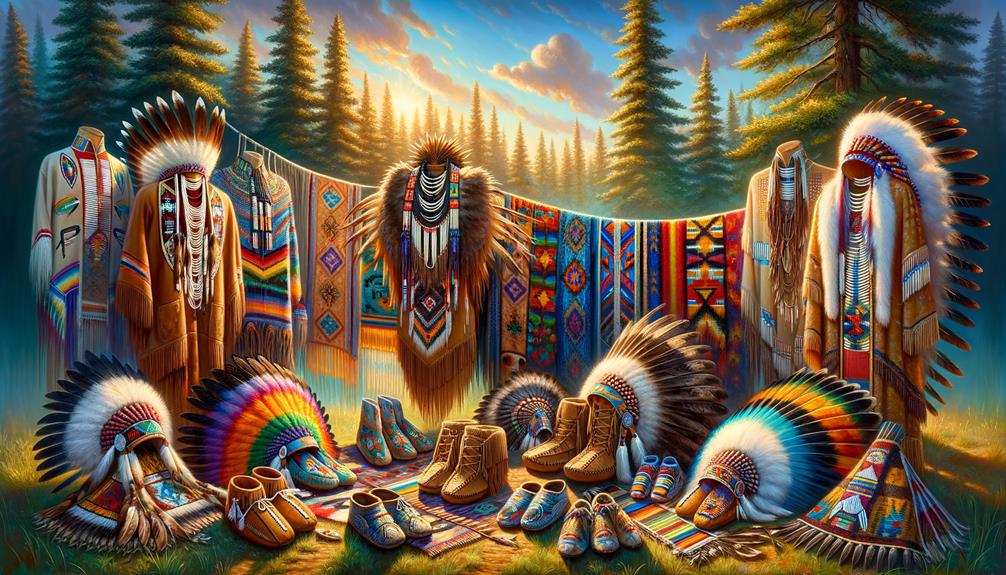
As I reflect on traditional Native American garments, I notice the intricate beadwork designs that tell stories of heritage and identity. Skilled artisans handcraft leather apparel, often adorned with these beads, showcasing their dedication and expertise. Ceremonial headdresses, rich in cultural significance, stand as powerful symbols during sacred events and gatherings.
Intricate Beadwork Designs
The vibrant beadwork adorning traditional Native American garments tells stories that weave together history, culture, and identity with every meticulously placed stitch. As I delve into these intricate designs, I'm struck by the sheer craftsmanship and artistry involved. Each tiny bead is hand-sewn, forming patterns that are not just visually stunning but also rich with cultural significance.
In Native American communities, beadwork isn't merely decoration; it's a form of storytelling that preserves tribal histories, beliefs, and identities. Every design element carries specific meanings, often reflecting nature, spiritual beliefs, or significant events. The colors, shapes, and arrangements aren't random but are carefully chosen to convey a particular narrative or symbol.
As I continue to explore, I see how beadwork serves as an artistic expression, a way to keep traditions alive in a rapidly changing world. Each garment becomes a canvas, each bead a brushstroke in a larger, meticulously crafted picture. The attention to detail is mesmerizing, revealing a deep connection to heritage and a relentless pursuit of perfection. In a world that increasingly values innovation, these beadwork designs remind me of the timeless innovation embedded in preserving and celebrating cultural identity.
Handcrafted Leather Apparel
Handcrafted Leather Apparel
The intricate beadwork on traditional Native American clothing tells a story, but the handcrafted leather apparel – like moccasins and buckskins – offers a tangible connection to the natural world and the enduring traditions of Indigenous North American tribes. These traditional garments, made from animal hides, are not just functional; they demonstrate the craftsmanship and cultural identity of Native American communities.
Moccasins, with their soft, durable leather, are both comfortable and resilient. Each pair, adorned with unique tribal designs and patterns, tells a story of its own – a narrative woven through quillwork, beadwork, and embroidery. Wearing moccasins provides a tactile experience, grounding one to the earth with each step.
Buckskins, crafted from deer or elk hides, were historically prized for their durability and protection against harsh elements. The meticulous process of creating these garments reflects a deep understanding and respect for natural resources. Wearing buckskins, one can't help but feel a profound connection to the land and the ancestors who crafted these pieces.
In modern fashion, elements of Native American clothing continue to inspire, blending tradition with contemporary aesthetics to create innovative, timeless designs.
Ceremonial Headdresses Significance
In observing the intricate designs of ceremonial headdresses, I am filled with profound respect for the deep cultural and spiritual significance they hold for Indigenous North American tribes. These headdresses are more than stunning artifacts; they are sacred items worn by leaders, warriors, and dancers during pivotal ceremonies and events, embodying honor, respect, and tradition.
Each element in a Native American ceremonial headdress carries layers of meaning:
Feathers represent achievements, acts of bravery, or spiritual connections.
Beads often symbolize the wearer's tribal heritage and personal journey.
Specific animals chosen for their symbolic attributes enhance the headdress's spiritual power.
Design variations reflect each tribe's distinct history and cultural significance.
As I examine these headdresses, I see how each feather, bead, and design choice is imbued with personal and tribal narratives. They aren't just decorative accessories; they are powerful symbols of heritage and identity. The craftsmanship and spiritual connections embedded in these ceremonial headdresses offer a window into the rich, multifaceted world of Native American culture, urging us to appreciate and innovate while respecting tradition.
Materials and Techniques
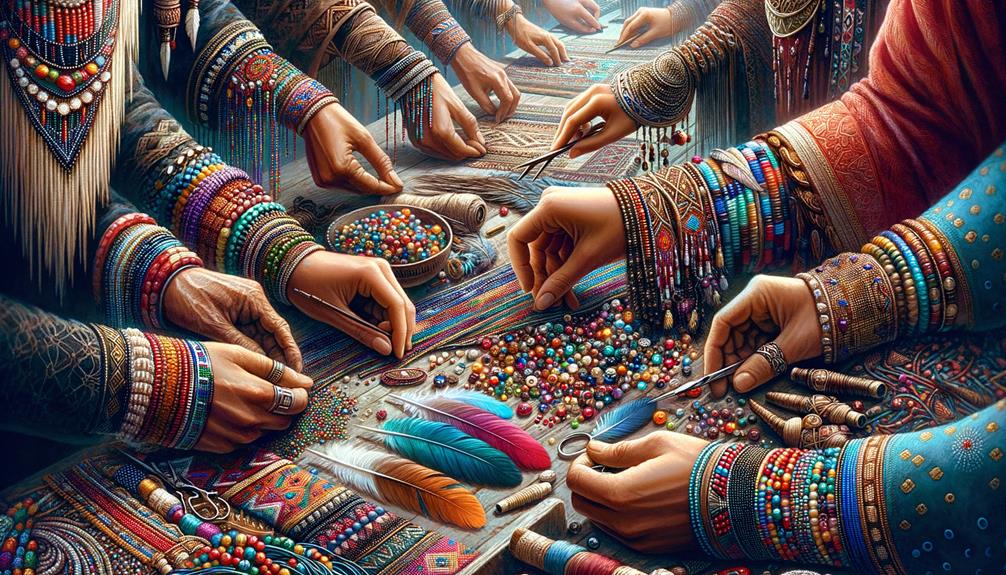
When I look at the materials and techniques used in Indigenous North American fashion, I'm struck by the deep connection to nature. The use of buckskin, animal hides, and plant fibers reflects a profound respect for the natural world. The intricate beadwork, quillwork, and weaving showcase an incredible level of handcrafting skill. What's fascinating is that these traditional methods are not just about aesthetics; they're also about honoring cultural heritage and living in harmony with the environment.
Traditional Natural Fibers
Diving into the world of Indigenous North American fashion, I've discovered that traditional natural fibers like buckskin, feathers, and plant fibers hold a deeper significance – they're a testament to centuries-old craftsmanship and a profound respect for nature. Native American traditional clothing, with its intricate designs and sustainable practices, conveys more than just style; it's a validation of cultural heritage and environmental harmony.
Natural fibers such as buckskin, prized for its durability and softness, were commonly used in making moccasins, clothing, and bags. These materials tell a story of a deep connection to the land and its resources. They were harvested and processed with care, showcasing the community's knowledge and sustainable practices.
Some key aspects of traditional natural fibers include:
Buckskin is soft and durable, making it perfect for garments and accessories.
Feathers hold significant cultural meaning and are often used for decorative purposes.
Plant fibers are utilized in weaving techniques to create strong, versatile textiles.
Quillwork is a meticulous decorative technique that uses porcupine quills, demonstrating incredible skill.
Handcrafting Methods
Exploring Indigenous North American fashion reveals a world where every stitch and bead embodies generations of cultural knowledge and significance. As I delve into the intricacies of this craft, I find that materials like buckskins, animal hides, feathers, and plant fibers are more than just resources – they're the heart of traditional clothing. Native American fashion designers honor these materials by transforming them into garments that resonate with cultural pride and history.
The meticulous attention to detail in beadwork, quillwork, and weaving techniques is breathtaking. Each bead is placed with precision, each quill is carefully dyed and softened, and each fiber is woven with a rhythm that speaks to ancestral expertise. These methods are a testament to the artisans' dedication, often learned from elders and perfected over countless hours.
Natural dyes derived from plants and minerals infuse the garments with vibrant hues, reflecting a deep connection to the land. Handcrafted regalia for ceremonies and dances showcase the full potential of this craft, highlighting both the cultural richness and exceptional craftsmanship of Indigenous North American fashion.
Decorative Techniques
As I delve into the world of Indigenous North American fashion, the intricate beadwork, vibrant quillwork, and masterful weaving capture my attention. These decorative techniques transform simple materials into profound expressions of culture and identity.
Beadwork is more than just a decorative technique; it's a representation of cultural beliefs and tribal identities. The meticulous placement of each bead reflects stories passed down through generations, conveying the significance of each design and pattern.
Quillwork, which uses dyed porcupine quills, showcases an extraordinary level of craftsmanship. The vibrant designs created on clothing and accessories highlight the artistry embedded in Native American culture. The process of dyeing and placing each quill requires immense skill and patience, making each piece unique.
Weaving techniques vary among tribes, with each tribe's unique patterns and styles reflecting their distinct cultural heritage. The use of animal hides, feathers, and plant fibers adds a natural beauty to the garments.
Traditional garments are often adorned with decorative elements that add layers of symbolism and meaning:
Fringe, shells, intricate embroidery, and feathers enrich the narrative woven into each piece of traditional clothing, making Indigenous North American fashion a testament to innovation and cultural preservation.
Modern Interpretations
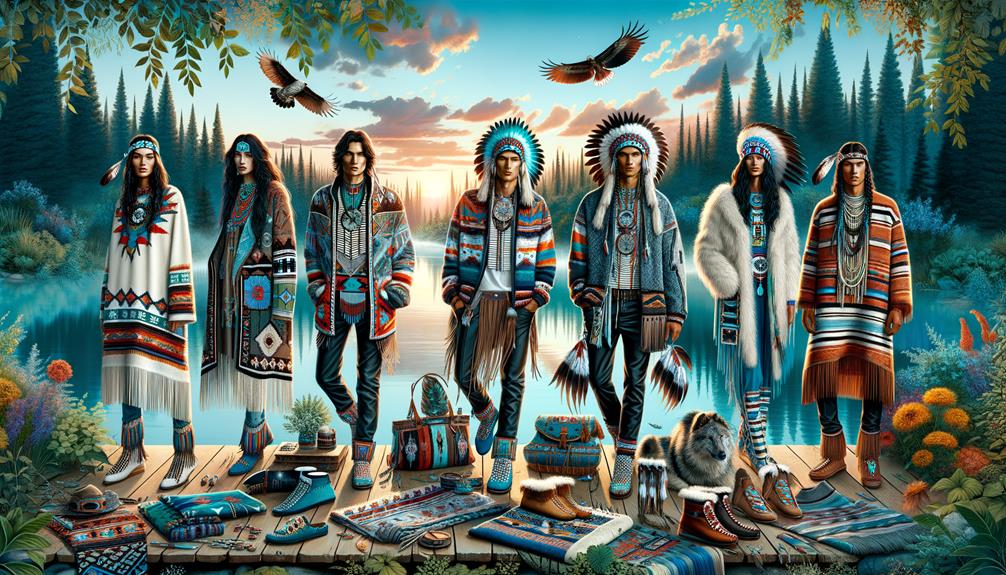
In observing the modern Indigenous North American fashion scene, it's clear that a harmonious blend of traditional artistry and contemporary design elements brings a sense of cultural pride and innovation. Native American designers are incorporating motifs like beadwork, quillwork, and weaving into contemporary fashion creations, celebrating heritage while paving the way for the future of fashion.
Sustainable practices are a cornerstone of contemporary Native American fashion. It's not just about aesthetics; it's about supporting Indigenous communities and promoting eco-friendly methods. Fashion shows and events dedicated to Indigenous designers have become essential platforms for showcasing innovative designs and fostering cultural exchange.
Collaborations between Native designers and mainstream brands are becoming more common. These partnerships play a vital role in the evolution and recognition of Indigenous fashion within the broader industry.
Let's explore some examples of these modern interpretations:
| Traditional Element | Modern Interpretation |
|---|---|
| Beadwork | Intricate patterns on jackets |
| Quillwork | Decorative accents on shoes |
| Weaving | Textured fabrics in dresses |
| Sustainable Practices | Eco-friendly clothing lines |
Through these collaborations and sustainable efforts, Indigenous North American fashion continues to inspire and innovate.
Symbolism and Meaning

Exploring the rich tapestry of symbolism in Native American fashion reveals a profound connection between each intricate design and the cultural narratives they represent. As I delve into this world, I'm struck by the meticulous craftsmanship and deep meanings woven into every garment. Each piece tells a story, reflecting the wearer's heritage, beliefs, and environment.
Consider the following symbolic elements often seen in Native American fashion:
- Colors: Each hue carries specific meanings—red symbolizes life and vitality, blue represents spirituality, and yellow embodies the sun and happiness.
- Patterns: Geometric shapes symbolize various elements of nature, from mountains to rivers, signifying the interconnectedness of all life.
- Animals: Representations of animals like eagles and bears embody spiritual guardianship and strength.
- Plants: Floral motifs not only highlight the natural world but also symbolize growth, renewal, and sustenance.
Traditional regalia, worn during ceremonies and dances, is a vivid tapestry of these symbols, conveying stories and ancestral knowledge. The beadwork and quillwork are more than decorative; they're a language, speaking of the natural world, spirituality, and community values that are central to Native American life. This rich symbolism transforms clothing into a living narrative, a testament to enduring cultural legacies.
Prominent Designers
When I explore the work of prominent Indigenous designers, I'm drawn to how they seamlessly merge traditional motifs with modern fashion, creating pieces that deeply resonate with both cultural heritage and contemporary aesthetics. Bethany Yellowtail's brand, B.Yellowtail, is a prime example. Her designs incorporate traditional Native American patterns and beadwork into modern silhouettes, making each piece a tribute to her Northern Cheyenne and Crow heritage.
Jamie Okuma, an artist from the Luiseno and Shoshone-Bannock tribes, mesmerizes with her intricate beadwork and contemporary designs. Her creations, often showcased in top museums, transcend fashion – they're art. Patricia Michaels, a Taos Pueblo designer and Project Runway finalist, brings her heritage to the forefront of high fashion. Her designs flow with organic lines and natural materials, echoing the landscapes of her ancestry.
Virgil Ortiz of the Cochiti Pueblo tribe takes a daring approach, fusing traditional pottery designs with futuristic fashion elements, resulting in avant-garde collections that challenge conventional norms. Jared Yazzie's OXDX brand stands out with its bold graphics and empowering messages for Indigenous communities, reflecting his Navajo roots. These Native American designers are not just preserving their heritage – they're revolutionizing fashion.
Cultural Impact
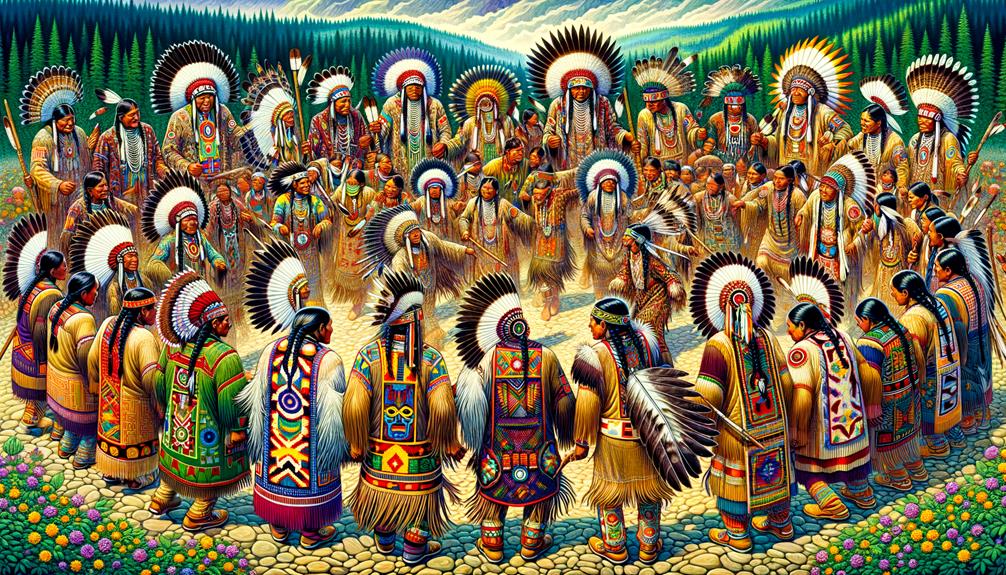
The cultural impact of Indigenous North American fashion is profound, serving as a vibrant affirmation of the enduring heritage and evolving identity of Native communities. This influence manifests in various powerful ways:
- Traditional Roots: Clothing crafted from natural materials like animal hides and feathers reveals deep cultural beliefs and tribal identities.
- Mainstream Inspiration: These designs have permeated mainstream fashion, inspiring global trends while maintaining their unique authenticity.
- Modern Fusion: Contemporary Native American designers skillfully blend traditional elements with modern styles, reclaiming cultural heritage and promoting sustainability.
- Legal Protection: The Indian Arts and Crafts Act of 1990 safeguards Native American designs, ensuring economic empowerment for indigenous artisans.
Observing these elements, it's clear that Indigenous fashion doesn't just preserve history – it actively shapes the future. Exhibitions and collaborations between Native designers and mainstream brands play a critical role in this dynamic. Recognizing Indigenous fashion in national shows and exhibitions further amplifies its cultural significance, ensuring that the rich tapestry of Native American traditional clothing and modern interpretations continue to inspire and innovate. This ongoing dialogue between past and present underscores the resilience and creativity of Native American communities, making their cultural contributions both timeless and forward-looking.
Frequently Asked Questions
What Did North American Natives Wear?
Reflecting on their attire, Native Americans wore practical clothing that also carried deep cultural significance. Their traditional garments, such as breechcloths, buffalo robes, and moccasins, were often intricately adorned with beadwork and quillwork. These adornments weren't just for aesthetics; they conveyed cultural beliefs, tribal identities, and spiritual symbolism.
What Is Native American Style Called?
Native American style is often referred to as Indigenous fashion. I see it as a vibrant blend of traditional and modern elements, where each piece tells a story, honoring heritage while pushing boundaries in contemporary fashion. It's truly inspiring.
What Type of Clothing Did Natives of the Northeast Wear?
Here's a rewritten version of the text:
In the Northeast, Native Americans wore a variety of clothing items, including breechcloths, tunics, leggings, and moccasins. What's striking about their attire is the intricate quillwork and beadwork that adorned it, reflecting their cultural identity and creativity.
Let me know if this meets your requirements!
What Type of Clothes Did Northwest Native Americans Wear?
Northwest Native Americans wore garments made from natural materials like cedar bark, animal hides, and plant fibers. Their clothing featured intricate designs, including woven hats, capes, and tunics. They adorned their outfits with shell buttons, dentalium, and abalone, showcasing their rich cultural heritage.

